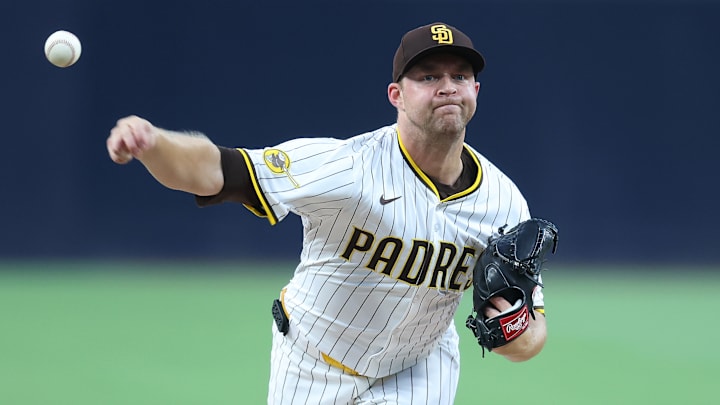The second the Padres bowed out against the Cubs, the hot-stove map shifted. For the Baltimore Orioles, who spent 2025 watching October from the couch, that shift should bring one name into crisp focus: Michael King. Baltimore’s offseason to-do list is straightforward — fortify a rotation that never quite settled, add playoff-tested swing-and-miss at the top, and build enough depth to survive the inevitable dings and dips of a 162-game grind. King checks the most important box: when he’s right, he pitches like a tone-setter, the kind of starter who reframes a series and shortens your bullpen’s night.
This winter can’t be about half-measures. The Orioles’ core is good enough to win now if the front of the staff stops feeling like musical chairs. That’s why the first call — front office to agent, or front office to San Diego if it’s a trade discussion, should be about King. With the Padres officially eliminated, the conversations that matter can actually start, and Baltimore should be at the front of the line. Even after a 75–87 finish, a quick jump back into the 2026 picture isn’t fantasy; it’s a pitching plan away.
Baltimore’s big swing should start with Michael King after Padres loss
It should start with making the call on Michael King. The timing helps. With San Diego’s season over, King and his camp will be open to mapping out what’s next, and the Orioles can credibly sell the opportunity. If it takes creativity, trade framework, performance incentives, vesting options — so be it. The point is to get in the room and stay there.
Yes, the medicals need to be part of the calculus. King’s 2025 was disjointed, derailed by a nerve issue in his right shoulder that caused inflammation and weakness, followed by left-knee inflammation he believes came from ramping up too quickly after the shoulder. He returned, made one start, and the knee barked — another IL detour. That’s not nothing. It’s also not destiny. The question for Baltimore isn’t “Was 2025 messy?” (it was) but “What does 2026 look like with a healthy King?”
Because when healthy, the value is obvious. In 15 starts this year, King still managed a 5–3 record with a 3.44 ERA and 76 strikeouts in 73⅓ innings, solid production for someone bouncing through stop-and-start health. The year before, at full strength, he delivered a complete campaign: 31 starts, a 2.95 ERA, and 201 strikeouts in 173⅔ innings. That’s frontline output. It’s fair to ask for trust; it’s malpractice to ignore that ceiling.
Now picture the fit. Start with a healthy trio of King, Grayson Rodriguez (coming back from triceps and elbow inflammation), and Kyle Braddish (post-TJ return) at the top — three playoff starters, on paper, before you even get to the fun part. Add what Trevor Rogers just did, a 1.81 ERA over 18 starts, and suddenly you’re playing matchup chess, not whack-a-mole. That level of insulation lets you get creative with Zach Eflin, too: keep him as a steady fifth who soaks innings, or dangle him in talks to rebalance the roster. King doesn’t just raise the floor; he gives you optionality.
The Orioles’ margin for error in 2026 will live on the mound. King brings strikeout punch, sequencing savvy, and the kind of presence that travels into hostile parks when the calendar flips to October. There’s risk, but there always is with pitchers. The payoff lines up perfectly with what Baltimore needs most. Make the call, do the homework, build the protections, and swing big.
